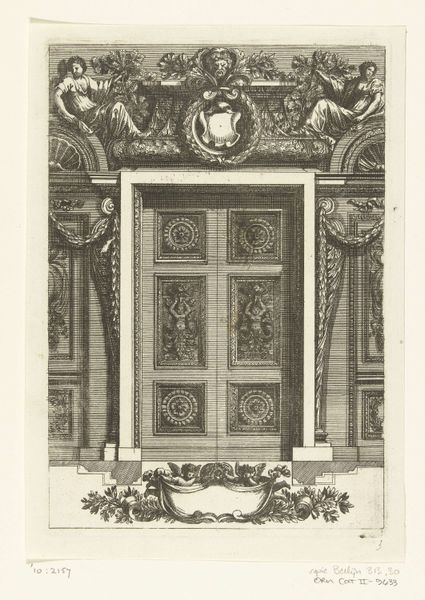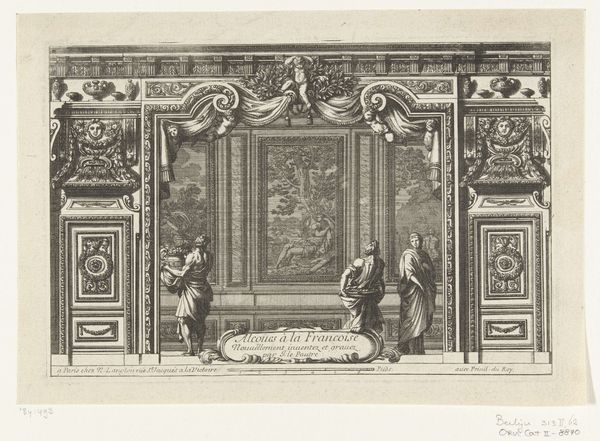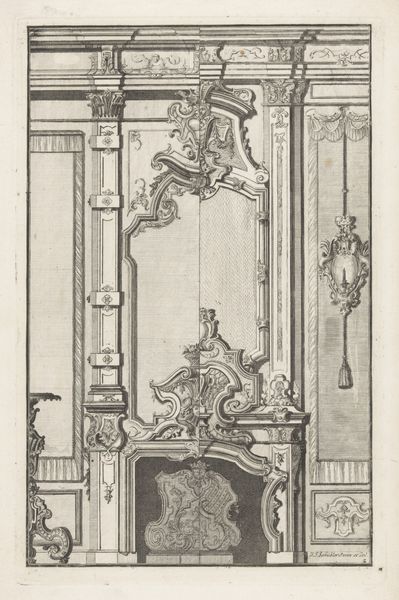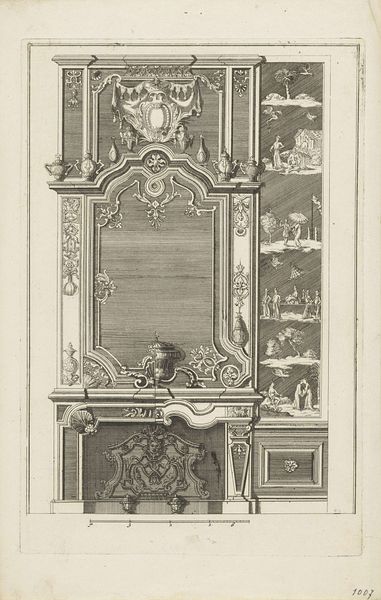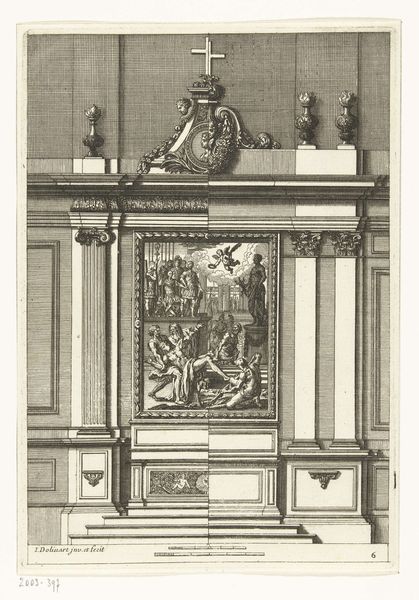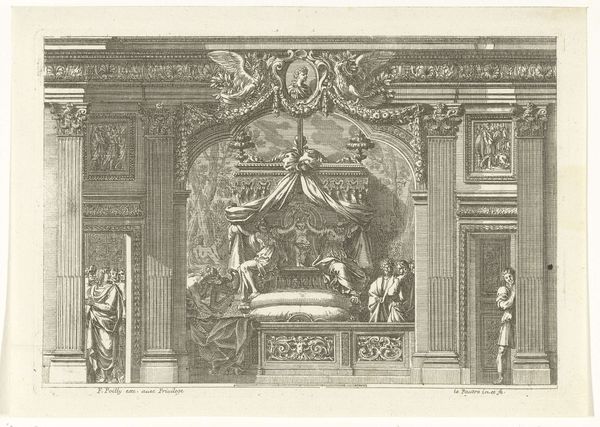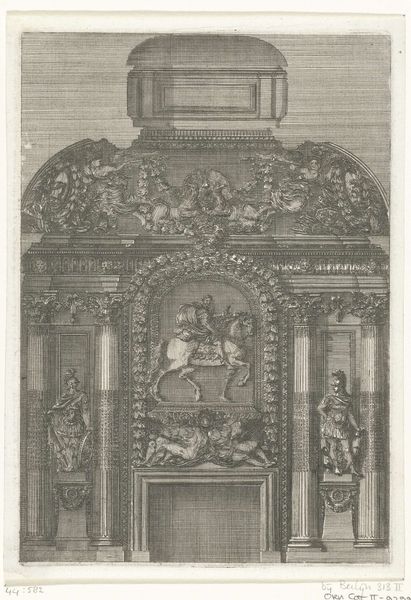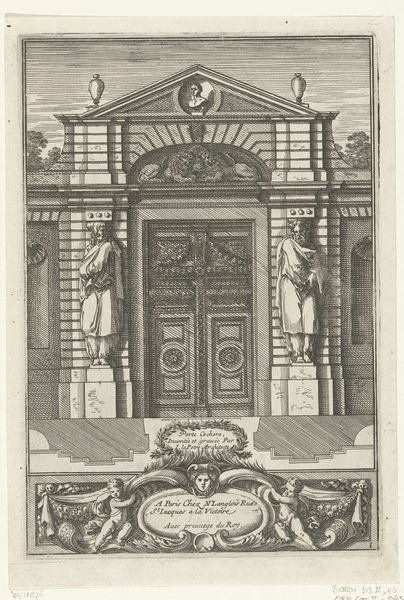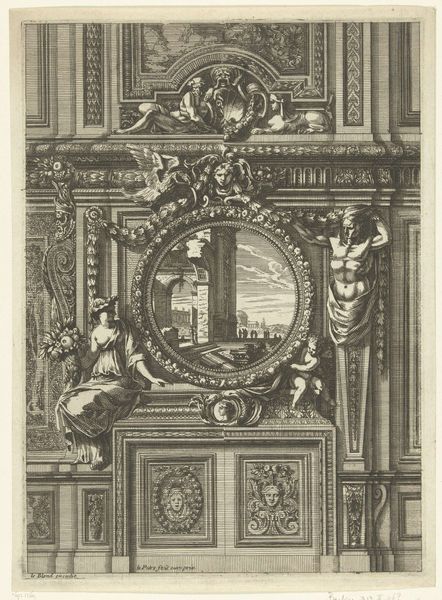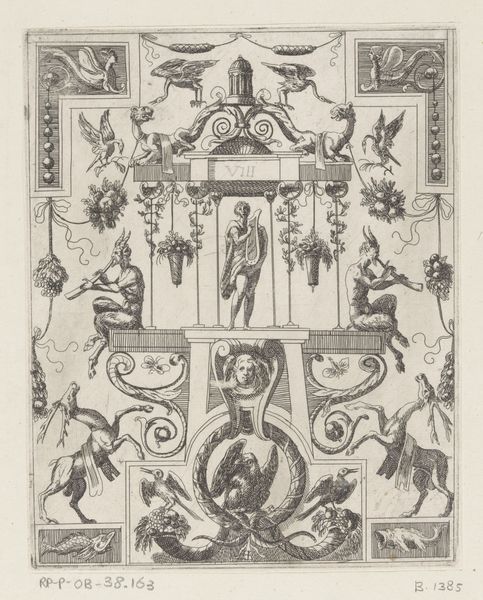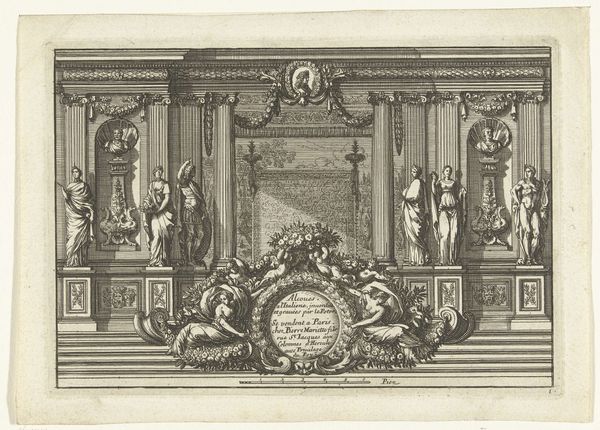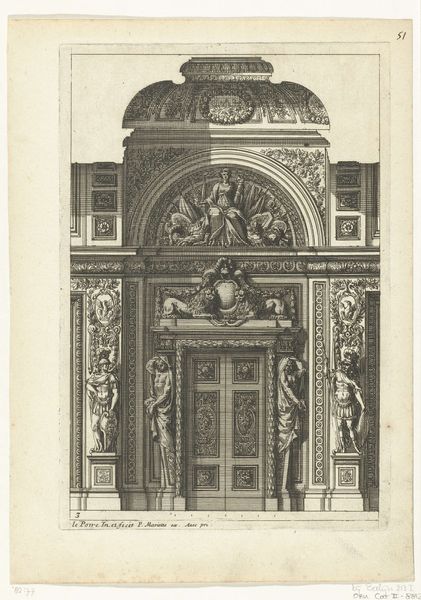
ornament, print, engraving, architecture
#
aged paper
#
ornament
#
baroque
# print
#
figuration
#
line
#
decorative-art
#
italian-renaissance
#
engraving
#
architecture
Dimensions: height 210 mm, width 145 mm
Copyright: Rijks Museum: Open Domain
Curator: Here we have "Titelblad: Scartaffii overo ornamenti," an engraving by Franz Ertinger, dating from before 1678. Editor: My first impression is… intensely symmetrical. It gives the illusion of immense weight through relatively simple, repetitive etched lines. Curator: Yes, and that symmetry speaks volumes. The door itself, framed by those almost melancholic figures, acts as a threshold. Are we meant to see this as a passage to knowledge, or perhaps something more symbolic, even funereal? Doors often represent life changes or secrets in art history. Editor: Right, but I’m equally drawn to the materiality of it all. Look at the aged paper, its texture—the actual physical object that Ertinger produced through the relatively manual and demanding labor of engraving. The repetitive nature of the ornamental panels could be read in contrast to the hand production involved, maybe. It highlights this transition toward the early industrial processes which prized reproducible artworks. Curator: Interesting take. The Italian Renaissance influence is strong— you can clearly identify those design ideals. The cherubs at the very top for example! Don't you think that adds another layer of complexity, nodding back to a classical golden age and how the artist and his time wanted to see themselves? Editor: Absolutely. Though those muscular figures supporting the door also make me think about the labor involved. All that sculpted weight can only have been borne by figures of immense strength. The way the art depicts their weight literally puts labor front and center. This piece isn't just decorative; it is rooted in physical effort. Curator: Ultimately, this title page is not just an invitation into a book of ornaments, it’s an invitation to reflect on our cultural memory. Every figure and carefully considered line has accumulated meaning over the centuries. Editor: And also to appreciate how it all actually came to be through process, and labor. So much weight supported by those figures and also, ultimately, by the artist's craft.
Comments
No comments
Be the first to comment and join the conversation on the ultimate creative platform.
